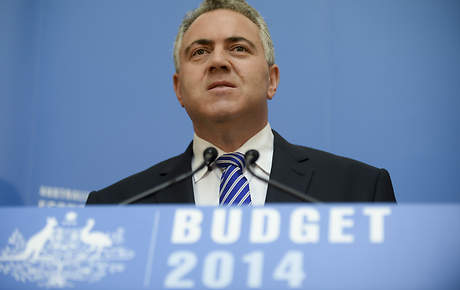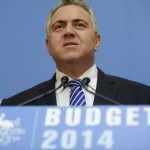
“When you change the government, you change the country”, said Paul Keating.
The 2014 budget, according to many commentators and analysts, brings with it as much ideological change as it does fiscal change and actions intended to indirectly affect a change in the Reserve bank’s monetary settings. It brings with it, unfortunately, managing change lessons too.
In this respect, the budget ushers in a revolutionary change rather than an evolutionary change to Australian society. Revolutionary change is different from evolutionary change in that it is less important to bring everyone with us on the change journey. The very nature of revolutionary change implies that some people will be hurt along the way. We, as leaders during revolutionary change, generally need to be harder of heart and mind and concentrated on a specific goal, than we do with evolutionary change.
So what can we learn from the budget in managing revolutionary change? What about managing change did Messrs Abbott and Hockey get right and what could they have done better?
Voice a powerful call for change
Revolutionary change needs a powerful reason. That reason must be believable and imminent.
The powerful reason offered for the revolutionary changes in this budget, as Tony Abbott commented, was that that his government would not try to “fool” people over the need for the federal government to tighten its belt and had decided Australia could not continue to live on borrowed money.
The postulation is that Australia is living well beyond its means and that the forecast spending on education brought about by unaffordable reforms and health brought about by unaffordable reforms plus the need to support Australia’s aging population necessitates drastic action to “repair the budget”; declaring a budget emergency.
It is a powerful reason. However the “believability” requirement of the electorate and economists has not been met well.
The electorate is not believing, possibly because of the direct impact of the scale and nature of change on them. They may well be looking for reasons to disbelieve the need for change because they are very uncomfortable with the change and wish to find a reason to reject the need for it.
Economists – while acknowledging the need for change – seem to prefer an evolutionary approach, citing low debt to GDP ratio, low revenue as a percentage of GDP, low unemployment, AA credit rating etc. as evidence that there is no imminent danger.
The message, while powerful, lacks overall believability by key stakeholders. This can be the death knell of revolutionary change.
Be transparent
Revolutionary change requires brutal honesty. Everyone must be clear about choices, consequences and the activities being undertaken. Rumours and misinformation kill change. Revolutionary change does not have the luxury of time to unravel misinformation.
The government has been brutal and transparent about most of the changes since budget night. However, the $80b taken out of planned spending on education and on health was done as a subterfuge, hidden in budget papers rather than detailed in the Treasurer’s speech. Not advising the states at a COAG meeting the week before has created a furious reaction from states, compounding the appearance of being untrustworthy even with political allies. This has added heavily to the lack of trust over broken promises since the election, which curiously the government still tries very hard to deny.
The government does not score so high on transparency over what is an ideological change dressed as a fiscal change.
When contemplating revolutionary change, do not use dressing to disguise your intent or rationale. Doing so only makes it very difficult to be consistent, as well as insistent and persistent.
Change the game
If you are attempting revolutionary change, do not do what you have already done. There must be a “shock” factor with revolutionary change.
The government scored 100% for shock factor.
The lesson for managing change in a revolutionary manner is that if you want people to concentrate on core principles, then you have to get to the heart of the matters you want to change.
Work at speed
Revolutionary change must be completed at speed for two reasons. The cost of inaction to the organisation is too high. The cost of uncertainty to the people undergoing the change and their families is too high.
Whilst the government has worked at commendable speed in the analysis and planning of the changes, many of the changes do not take effect until after the next election. This may mean that the feeling of impending doom and the impact on confidence will be around for a longer time than desirable, as each element of change hits. However, in this case, the scale of change is so large and the potential for negative impact if the change was rolled out any faster, it may well be that the planned pace of change is all society can bear.
When contemplating revolutionary change, take care to ensure that you work at a speed which balances the need to not prolong anxiety and any deleterious impact on the organisation.
Allocate roles
One person cannot orchestrate revolutionary change. Roles must be allocated and adhered to. Roles are allocated based on competency and authority only.
The government has been strong at allocating roles to the Prime Minster and Treasurer, which we would expect, but have also been able to see the need, for instance, in having Christopher Pyne allocated the role of negotiating with Clive Palmer.
When executing revolutionary change, treat it as you might treat crisis management and ensure everybody knows who is doing what and that all players in key roles have the competency and authority required to execute their role.
Plan for contingencies
Unintended consequences sink many change programmes, whether they are evolutionary or revolutionary.
Whilst consequences may be unintended, they are rarely unpredictable.
The government does not seem to be over surprised by the reaction of stakeholders and also seem to have some contingencies in negotiating with senators needed to pass legislation and the budget. It is not possible to know what their contingencies are beyond that and a double dissolution election, however, they seem to have done at least some contingency planning. Although, they seem to not have planned for a change in communication strategy if they are not believed.
All plans, when they are created, are bound to be wrong. You cannot predict with one hundred percent certainty. You can, however, think of what could go wrong and plan actions, in addition to the original plan, should any of those ‘wrong’ outcomes begin to manifest themselves.
Communicate, communicate, communicate
Revolutionary change is, by nature, fast paced. Communication needs to keep pace, not only with the change being implemented but with people’s emotions, rumours, misinformation and preferred communication styles.
The government has been in communication mode, setting the context for the change well before the budget. It is hampered, however, by the general consensus of having lied before the election and in lying even now. Their denial over this in particular suggests that they have not considered what they want the stakeholders to feel, think and do as a result of their communication. They are relying on consistency of line even when it is not believed and, as a result, may find that elements of their communication, which is completely truthful, is not believed either.
When undertaking revolutionary change, whilst it is not imperative to take everyone with you, it is necessary to take a critical mass with you. Communication must be evaluated and altered as necessary, focusing on the outcome desired rather than the ensuring the inputs never vary. It must be remembered though, that the communication cannot be seen as inconsistent if you change the message.






